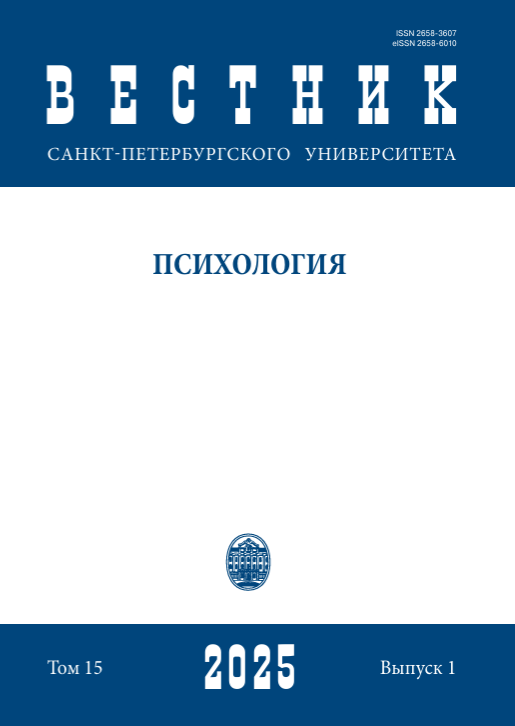A model for predicting affective characteristics of color palette images
DOI:
https://doi.org/10.21638/spbu16.2025.106Abstract
The study uses computer vision and machine learning technologies to assess the relationship between the emotional labeling of images and the characteristics of their color palette. The color palette of images in the HSV space was estimated using a modified image clustering algorithm, in which the cluster centroids were determined arbitrarily. The colors of the Luscher test were taken as the centroids of the clusters. The stimulus material for training the random forest model was taken from the Open affective standardized image set (OASIS) database. The parameters of the final random forest model for the test set: AUC = 0.77, Accuracy = 0.744, Kappa = 0.489; for the training set: AUC = 0.969, Accuracy = 0.904, Kappa = 0.808. The achieved classification accuracy can be interpreted as sufficient, provided that the original corpus labeling, on which the training took place, has emotional labeling that considers not only low-level characteristics of images, but also the semantics of scenes. To test the validity of the model, we: 1) used a pre-trained random forest model to estimate the emotional valence of a base of artistic photographs and a base of abstract images; 2) statistically assessed the quality of valence assessment of specific emotions in artistic photographs and abstract
images; 3) compared the results obtained for both bases. The obtained results allow us to conclude that the proposed random forest model is applicable to solving problems of image classification by color palette characteristics. If the confidence in classifying images as positive or negative is more than 60 %, we can predict that the color palette of the stimulus material will induce amusement, awe, excitement, fear, sad and content. The quality of recognition of negative emotions such as anger and disgust are not good enough. The proposed model is recommended for hybrid labeling of stimulus material, especially in cases of primary assessment of the emotional valence of images.
Keywords:
affective marking, Lusher color test, image clustering, random forest model
Downloads
References
References
Downloads
Published
How to Cite
Issue
Section
License
Articles of "Vestnik of Saint Petersburg University. Psychology" are open access distributed under the terms of the License Agreement with Saint Petersburg State University, which permits to the authors unrestricted distribution and self-archiving free of charge.




